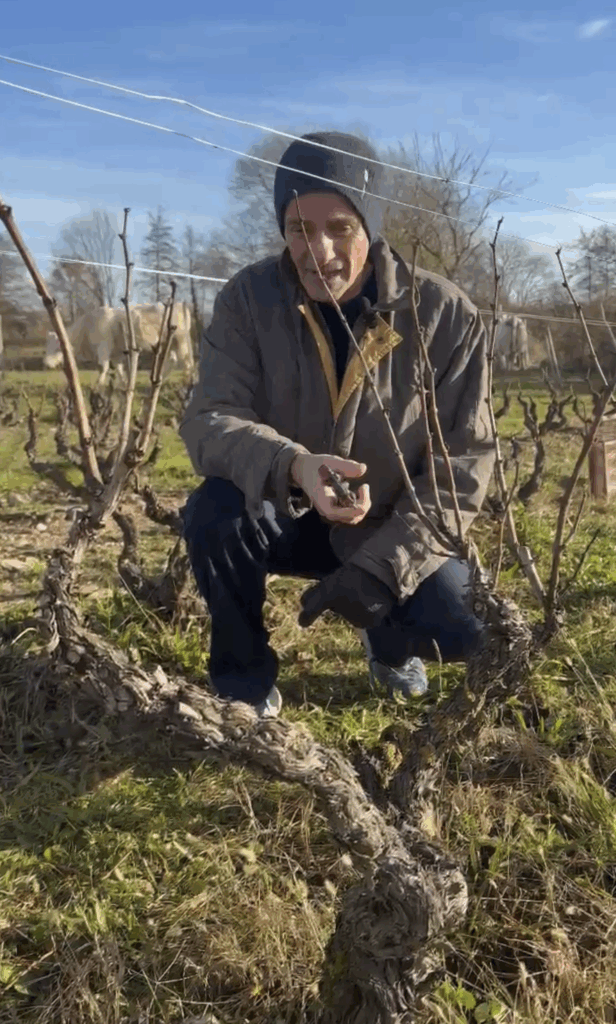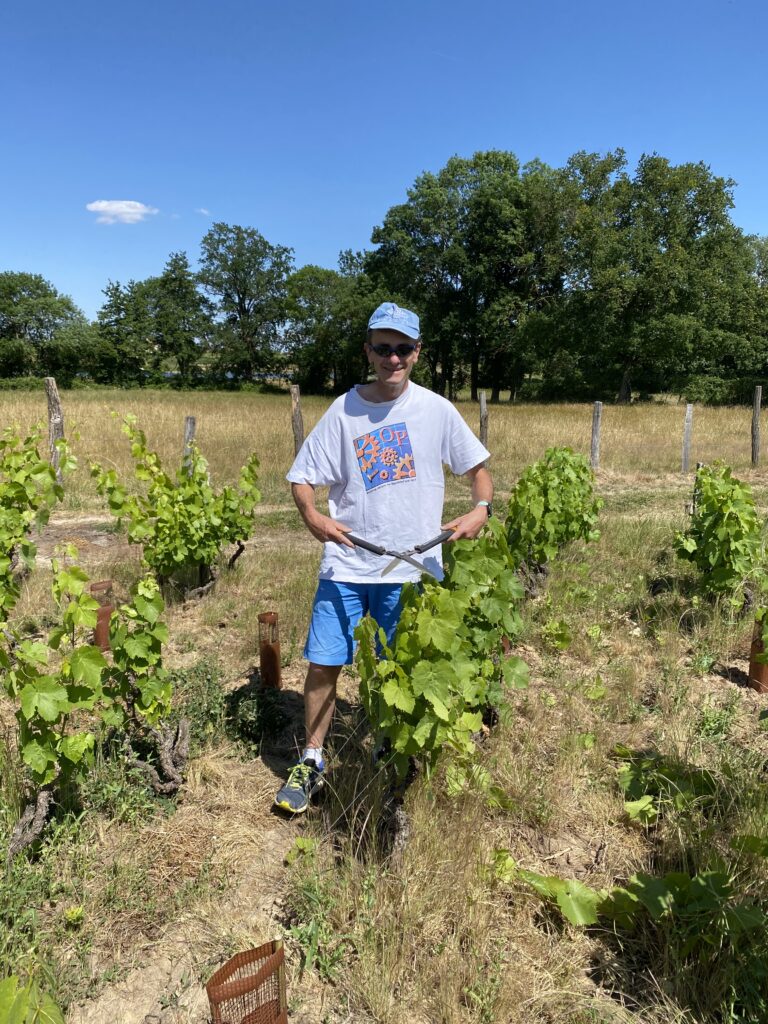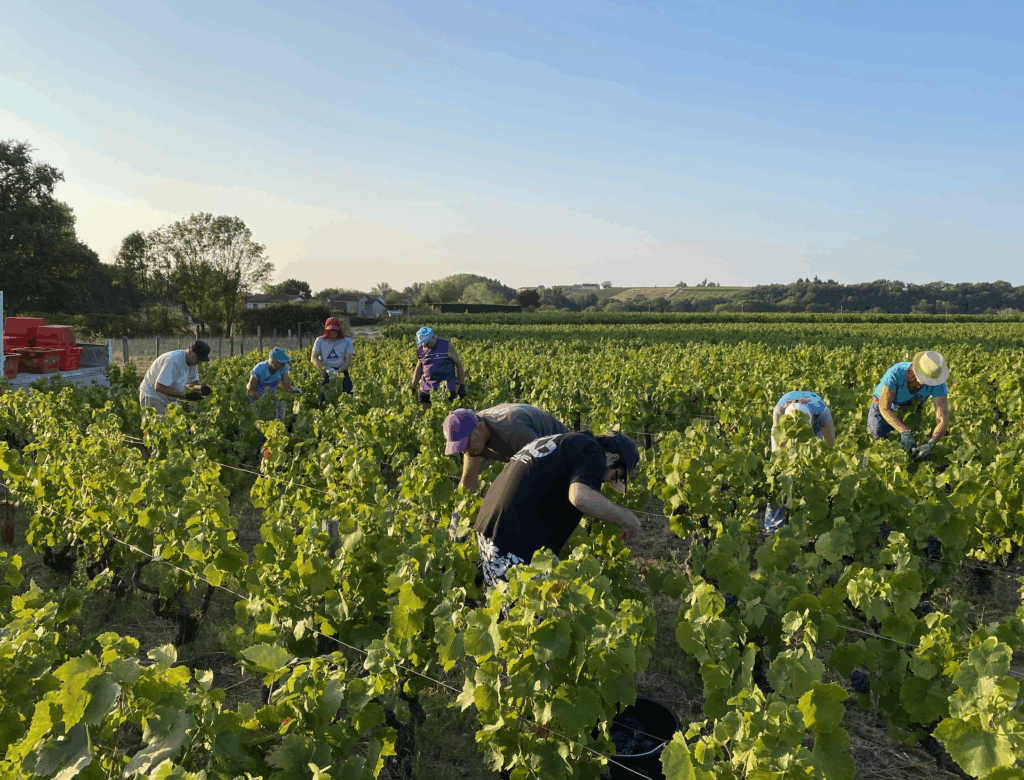
Organic wine
Our organic wine is located in the heart of Beaujolais, offering unspoiled landscapes and a rich terroir for environmentally friendly wines.
The vineyard is over 40 years old and was planted by my father. I began converting to organic farming in 2021 to rediscover the roots of the work as it was done in the past and produce organic grapes whose quality I have complete control over.
The grape variety is Gamay noir with white juice from a terroir of Piedmont and ancient alluvium.
Pruning
Pruning is a job carried out during the winter. I proceed vine by vine using a “goblet” pruning technique. Specifically, I leave a support with two buds on each horn and take care to clean the remaining antlers along the horn.
At the end of the pruning, I remove the pruning wood and burn it to avoid burying wood disease fungi in the soil.

Plowing
A significant part of the work involves removing the weeds that compete with the vine, hence the necessary plowing.
This work is done regularly throughout the year, in spring, early summer, and winter. In the photo, you can see “Hermes”, the horse, working in the rows.
Trellising and Trimming
Every year, at the beginning of June, I prune the vines for several reasons. This operation, which can be broken down into two stages: Trellising and Trimming, is crucial for the health of the vines and the future quality of the wine.
Trellising involves raising the vine shoots (the new shoots of the vine) and inserting them between wires. This allows for greater ventilation, better exposure of the grapes to the sun, and easier movement in the rows. In the event of hail, the grapes are also better protected.
Trimming, on the other hand, involves pruning the branches to limit the growth of vegetation. Less vegetation means better air circulation, which reduces the risk of diseases caused by fungi. It is also a way to concentrate the sap on the bunches, which promotes grape ripening.
In short, these two stages are essential to ensure a good harvest and quality grapes.


The Magic of the Harvest: A Family and Epicurean Ritual
Each year, as harvest time approaches, the vineyard becomes the stage for an ancestral ritual, orchestrated with love and precision. Far from noisy machines, the grape harvest is a labor of love, shared among family and friends, where each cluster is picked by hand. The crucial date isn’t decided lightly; it’s whispered in the final days, the result of carefully listening to the vineyard. I sample the grapes three times, scrutinizing the fruit’s secret: the future alcohol content, the balance of tartaric acid, and the pH, all clues to harvesting the grapes at their peak.
Then comes the big day, a true celebration. The good humor and ardor of the pickers fill the rows from dawn, interrupted only by a comforting morning snack, enjoyed outdoors. Lunch, eaten among the vines, is a suspended moment where simple flavors mingle with the satisfaction of a job well done. When the sun sets and the bins are full, the celebration continues. In the evening, around a generous table, we raise our glasses of good Beaujolais, our voices united in song, celebrating the land and the fruit of our efforts together, in the most beautiful of traditions. It’s a day etched in our memories, an unbreakable bond with the vine and the art of living.
